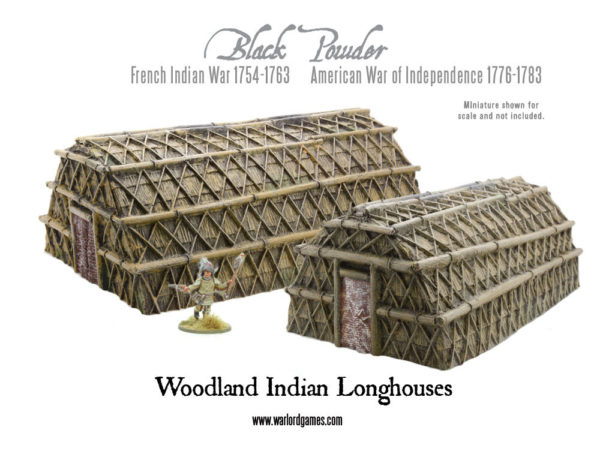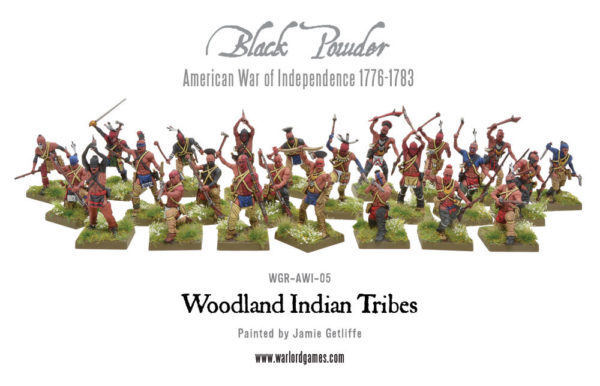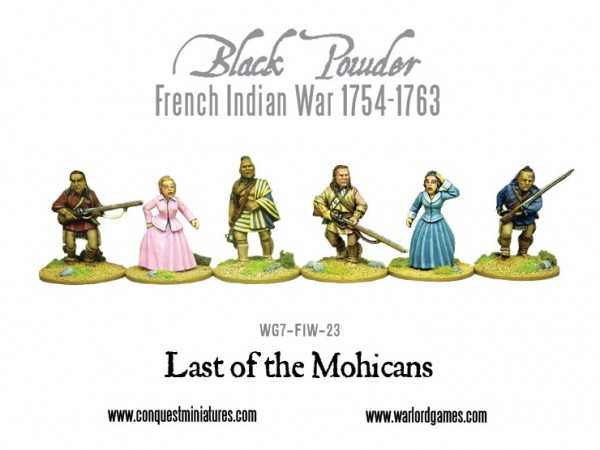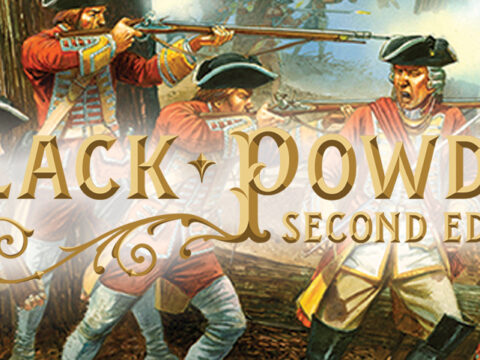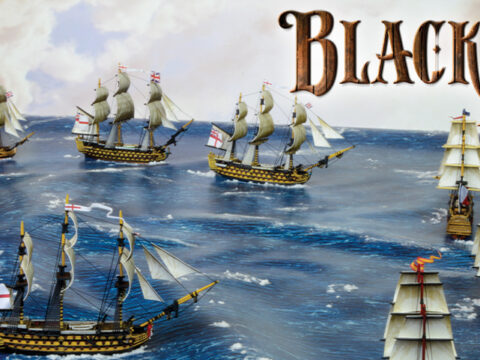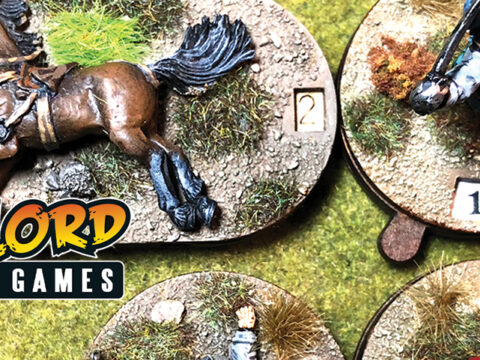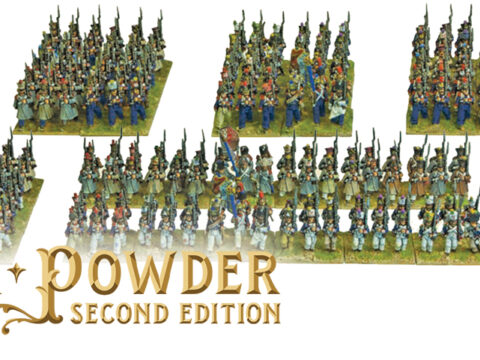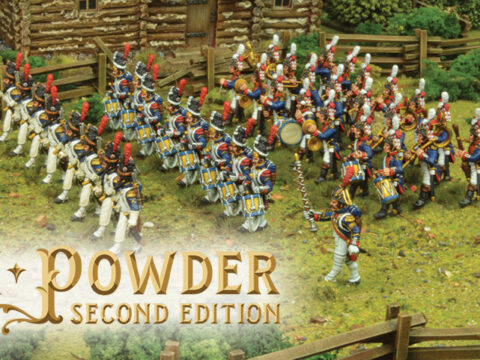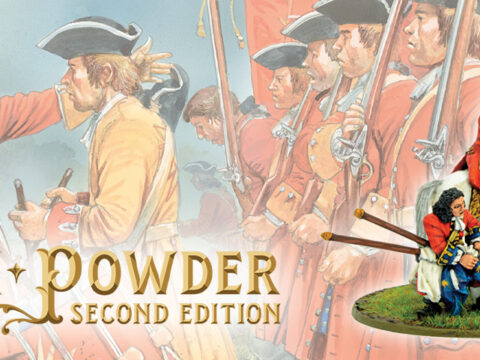Covering the Ohio Valley, this is the first three articles by Tim Greene exploring the various native Indian tribes in the Americas.
Part One: The Ohio Valley
By Tim Greene
War In The Forest, a French and Indian War supplement for Chris Peer’s skirmish rules set A Good Day To Die, was released in February of 2005. The rules cover an unusual aspect of the conflict, one glamorized by the movie The Last Of The Mohicans, the fighting on the frontier between settlers, rangers, couriers du bois, and Indian war parties.
As these encounters frequently pitted warriors from rival tribes against each other getting some idea of how the appearance of the various woodland tribes was distinctive seems like a good idea. Players can then paint up their figures to represent their favorite tribe and pit them against rival tribes painted up by their opponents. Fortunately for those who are not skilled at figure conversions and modeling, figures representing specific tribes are now available from Warlord Games in the form of the Conquest Miniatures range.
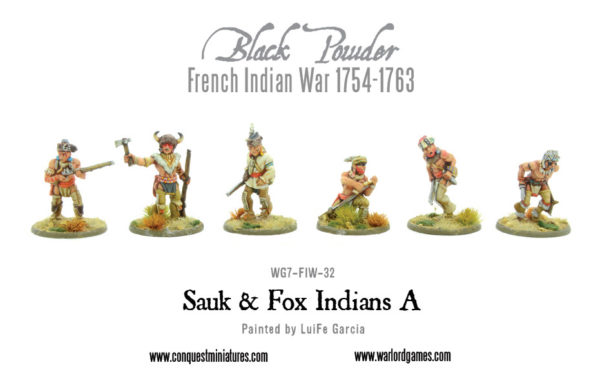
In this article we shall look at the tribes living in the Ohio Valley, subsequent articles will look at the Great Lakes and the Southeast.
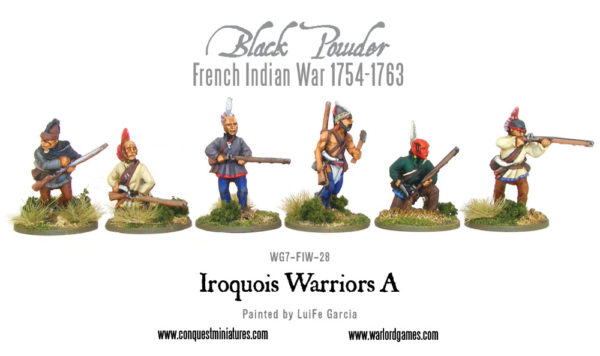
The Beaver Wars of the mid and late 17th Century saw many tribes such as the Eries, Neutrals, Hurons, Petuns, Delawares and Susquehannocks destroyed, scattered, or absorbed by the victorious Five Nations of the Iroquois. Some of those who escaped fled south and some fled north but many fled to the Ohio Valley and its rich hunting grounds. Here they met tribes already established in the region such as the Miamis and the Shawnees. Mostly these tribes welcomed the refugees and allowed them to settle on land that was not being used. The tribes resisted white incursions into their hunting grounds. Both the immigration of Anglo-American colonists and the efforts by the French to bring the Ohio Valley tribes into their imperial system of trade and fur production were resisted and the resultant fighting involved not just whites against natives but incursions by the Great Lakes and New York tribes on behalf of their European allies.
Delaware
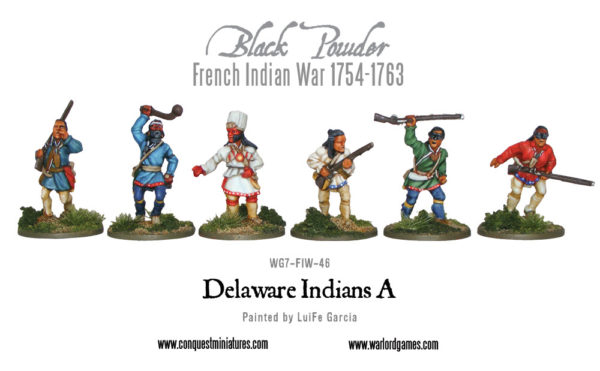
The Leni-Lenape, as the Delaware called themselves, were once a powerful confederacy along the Atlantic coast. They had an advanced culture, including a form of picture writing and the other Algonquian speaking tribes called them “grandfathers”. Decimated by disease and wars with the Europeans and Iroquois during the 16th and 17th Centuries they were eventually driven first into Pennsylvania and then Ohio. They were closely related to the Mohicans. The Iroquois claimed to have defeated the Delawares and reduced them to the status of “women” (in the sense that they surrendered their political independence to the League). Despite this the Delawares were regarded as first rate woodsmen and formidable warriors. They had a reputation for ferocity despite mostly being men of medium stature. In the 18th Century they were bitter enemies of the Anglo-Americans who took their best lands in Pennsylvania and eastern Ohio with the permission of the Iroquois who claimed the Ohio Valley lands of the tribes they had “conquered” and did a brisk business selling those lands to the British!
Delaware warriors wore breechclouts with flaps in front and back and thigh length leggings of deerskin fastened at the sides with thongs and gartered just below the knees. Tanned deerskin cloaks were worn fastened at the neck leaving the arms free, sometimes draped over one shoulder and belted. Decoration was concentric circles or spirals of shell beads. Winter robes of fur, bear, wildcat, beaver, wolf, and raccoon sewn together were also worn. Garment designs were floral, symmetrical and stylized. Most men wore their hair long and loose either with a wampum-decorated headband or gathered at the back like a ponytail. Some warriors followed the dominant fashion in the woodlands of shaving the head leaving a scalplock hanging behind. Sometimes a brush of stiff hair was left standing two to three inches high from forehead to nape with a scalplock. Chiefs might wear a crown of upstanding turkey feathers dyed red. Moccasins were simple and one piece made of moose or deerhide with a seam at the back and up the front. Cuff flaps were large, almost brushing the ground. The Delawares tattooed the face and body with animal figures. The face was often painted with geometric or animal designs. Black, red, white, and yellow paints and clays were used.
Huron or Wyandot
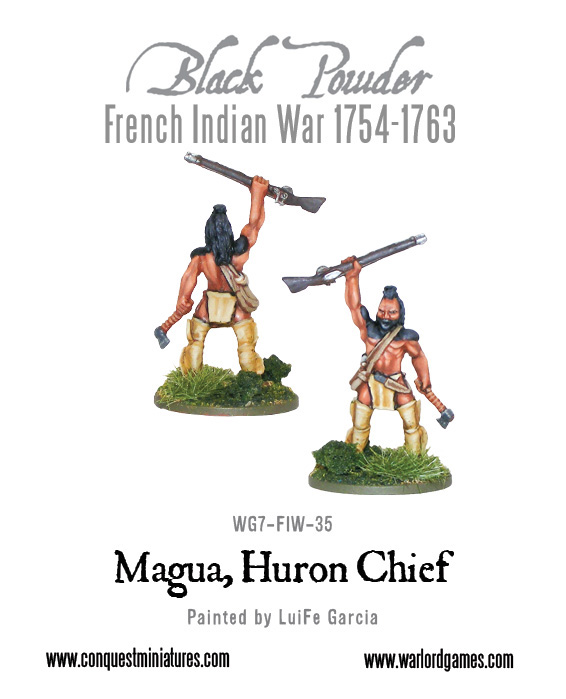
These people were the remnant of the Iroquoian speaking confederacies smashed by the Five Nations during the Beaver Wars of the mid 17th Century. Their scattered refugees reunited in the Great Lakes region under the name of Hurons. The Hurons were staunch allies of the French often doing their “dirty work” for them. The Wyandots were a faction of these people who emigrated to the Sandusky region of the Ohio Valley. Displaced to Minnesota the Hurons tried, in company with their allies the Ottawa, throughout the 18th Century to drive the Sioux from their lands. They were largely unsuccessful in this despite possessing more guns than their enemies. The Wyandots joined the Delaware and the Shawnee in fiercely opposing the settlement of the Ohio Valley by whites in the 18th Century. Both peoples resembled their Algonquian speaking allies in their way of life more than they did their Iroquoian cousins though they were never the woodsmen or canoemen the Algonquian tribe’s warriors were.
Huron and Wyandot men wore fitted breechclout with flaps to mid thigh in front and back. Thigh length leggings tied to a belt with thongs. Sleeveless tunics or a poncho in cooler weather. Decoration was bands of quillwork or moose-hair embroidery in reds and browns. Garments were sometimes painted and had long fringes attached occasionally. Designs were floral. A variety of hair styles were worn. These included the head shaved with the roach, the head shaved with a tuft left on top and a scalplock, half the head shaved with the hair left long on the other half, hair worn loose, or the hair in two large rolls over the ears with the rest of the head shaved. A chief’s headdress was a cap of feathers with an embroidered headband rising to a peak at the front. Moccasins were carefully puckered in the vamp in the “bull-nose” style or with a seam from toe to instep considered a decorative strip. Hurons and Wyandots liked buckskin dyed black. Cuffs were decorated with quillwork and dyed moosehair. The face and body were painted with geometric designs or representations of animals and humans. Few men were tattooed. Black, red, green and violet paints were used.

Miami
The Miami were originally from the Great Lakes area but migrated south into the Ohio Valley where they joined the Illinois Confederacy. Unlike the other Illinois tribes the Miamis were well respected warriors. They bearded the Iroquois on at least one occasion and were responsible for the worst defeat ever suffered by the U.S. army in its wars with the Indians. Unlike most of the Ohio Valley tribes the Miamis were not staunch French allies. They often traded with the British this eventually led to a French instigated attack on the Miami town of Pickawillany by a force of couriers du bois and Nippissings who boiled and ate the corpse of the Miami chief La Demoiselle. Despite their friendliness to the British the Miamis were of an independent cast of mind and bitterly resisted the incursions of Anglo-American settlers into the Ohio Valley.
Miami men wore very little, in winter just a deerskin shirt of simple cut, breechclout, and moccasins. Breechclouts were painted red, a favorite Miami color. In summer only a breechclout and moccasins were worn. Leggings were worn on special occasions and were gartered at the knees and were knee or thigh length. The front and bottom of each leg were decorated by embroidered bands. Skins were generally dyed red and sometimes painted in the manner of the Plains Indians. The roach was commonly worn by the men. Sometimes the entire head was shaved leaving a tuft at the crown. Some men wore the hair short except for long locks dangling in front and behind the ears. Moccasins were soft soled with a central seam in front and unusually large flaps almost covering the toes with a different design on each side repeating the designs on the other foot in reverse. Patterns on the flaps included elongated diamonds and triangles done with dyed porcupine quills. Red facial paint was extensively used. Black was sometimes added as well. The body was often painted brown. Men were tattooed with elaborate designs such as seven parallel lines on the nose and cheeks and ten on the chin.
Mingo
The Mingos were dissident faction of mostly Senecas and Cayugas who settled in the Ohio Valley lands which the League claimed to have conquered from the Ohio Valley tribes. Unlike the 5 Nations, the Mingos were often pro-French in their policies. Their towns also often contained members of all the Ohio Valley tribes including Delawares, Wyandots, and Shawnees. The Mingos usually ignored League policies. They were very bitter against the white settlers pushing into the Ohio Valley after some of these killed Chief Logan’s family in a very brutal manner. After this they fought the whites very fiercely. All the notes on the appearance of the Mingos apply equally well to the tribes of the 5 Nations – Senecas, Cayugas, Oneidas, Onondagas, and Mohawks.
Mingo men wore tanned leather breechclout with rather short ends in front and back. Knee length kilts held in place with a belt were worn for ceremonies. Leggings were somewhat loose and sewn up in front with an embroidered strip covering the seam. A curve at the bottom in front and back left an opening over the instep. The leggings were gartered above the knee and rarely fringed. They were long, partially covering the moccasins and dragging on the ground. Simple tunics made of two pieces of buckskin fastened at the shoulders, mid-length and fringed on the bottom. Decoration was in arrow and chevron designs. Quillwork and moose-hair embroidery featured curvilinear designs. Beadwork was white lacey designs on dark (often blue) backgrounds. Heads were shaved except for a scalplock. Many wore the roach. Chiefs wore the “gustoweh” skull cap on a frame with overlapping layers of feathers hanging down all around except for one, two, or three feathers help upright and rotating in a bone socket. Moccasins featured a squarish flap. They were either a one piece design with seam down the front or a two piece style with an oval or U shaped insert over the instep with the sole gathered in to fit. The cuffs and vamps had quillwork and dyed moosehair in curvilinear designs. A black rectangle or three stripes were painted on each cheek. Many men sported spectacular tattooing of double-curve motifs, geometric designs and clan crests.
Shawnee
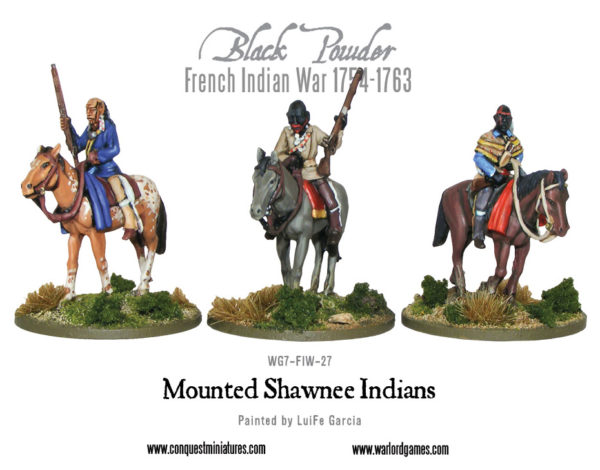
The Shawnee, meaning “southerners”, were a tribe of wanderers who were often invited by other tribes to live among them because of their reputation as fierce fighters. An Algonquian speaking people closely related to the Sac & Fox they lived from the Great Lakes region to the Carolinas. The Shawnee claim to have prevented the Iroquois from completing their conquest of the Ohio Valley. They certainly resisted white expansion into the Ohio Valley more fiercely than any other tribe. They threw up a great leader in Tecumseh who came very close to creating a pan-Indian confederacy which might have slowed or even halted the westward expansion of the white frontier.
Shawnee men wore tanned leather breechclout small with short flap in front. Deerskin leggings above the knee gartered below the knee with fringes along the side seams and fastened to a belt with straps. Garments were simple, sometimes decorated with fringes. Other ornamentation was rarely used; when it was arrow, chevron, and zigzag designs were preferred. The roach was rarely worn by the Shawnees. Men shaved the head in front and attached feathers at the back or left the hair long and loose. Some Shawnee wrapped their long finger woven sashes round their heads like turbans. Moccasins were soft soled one piece with a seam up the front from toe to instep covered by quillwork. Cuffs were small and turned down. Face paint was usually red. Very, very fine lines were sometimes tattooed on the face. In overall appearance the Shawnee were rather simple and plain compared to the other tribes.
By the early nineteenth century all the tribes were wearing a lot of cloth manufactured in England or America, especially calicoes and red or blue strouding. Sashes were often woven around the head like a turban. These five tribes were some of the major players in the Ohio Valley. The next installment will look at the tribes of the Great Lakes region.
To be Continued in parts 2 and 3 coming soon
Source:
- Paterek, Josephine, Encyclopedia of American Indian Costume, W.W. Norton, New York, 1994
- Hyde, George E., Indians of the Woodlands From Prehistoric Times to 1725, Norman Oklahoma 1962.
